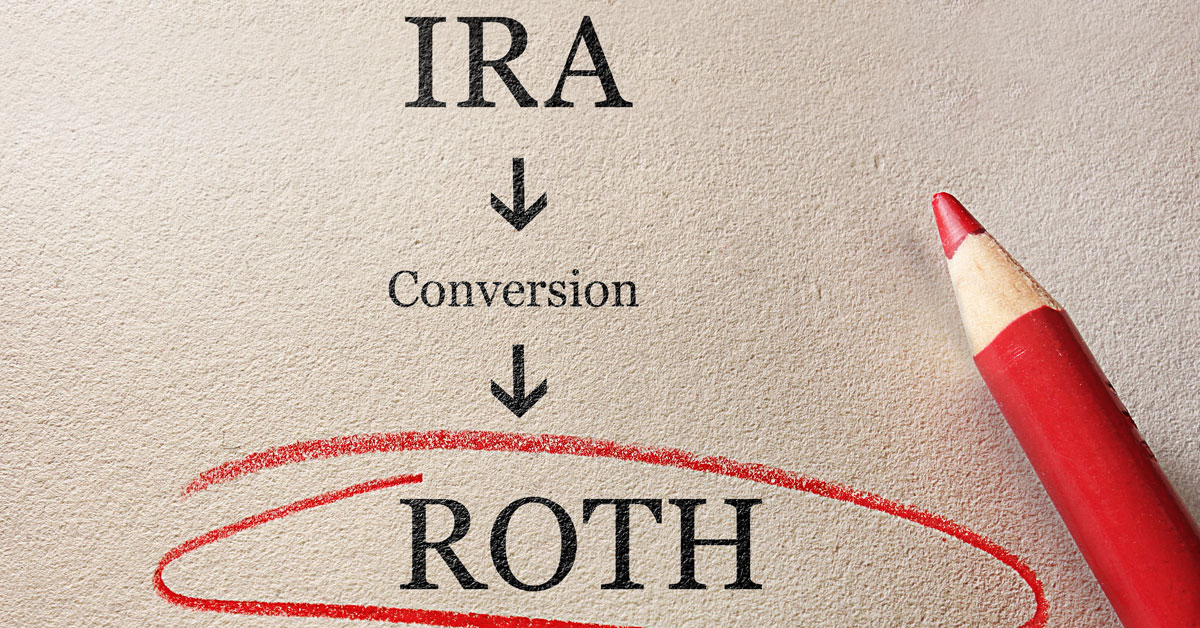Planning for retirement as a small business owner comes with its own set of challenges, and the earlier you begin preparing for the transition, the better.
Continue readingPlanning for Medical Costs in Retirement
Whether you’re early on in your working career, approaching retirement, or already transitioning out of the workforce, it’s important to be realistic about what you should expect to pay for medical costs in retirement.
Continue readingRetirement Income Planning – No Paycheck?
Whether you’re retiring soon or just getting started, there are questions to answer and steps to take to make sure you’re prepared for what comes next. Think of retirement income planning as your map to the future you wish to create.
Continue reading5 Things to Do When Retiring as a Single Woman
As a single woman, it can be scary facing retirement alone. Single women face different challenges when retiring, including living longer and needing more financial resources. These challenges require advice for single women in retirement to be different than typical retirement advice. Continue reading to learn what things to do when retiring as a single woman.
Create a Retirement Plan
Having a plan for your finances in your golden years is crucial. No one wants to have to worry about making ends meet when trying to enjoy their retirement. When sitting down to set up a plan, you can find the best opportunities for you and avoid several mistakes. This plan includes at what age you can retire, how much you need to pay yourself in retirement, and what your sources of retirement income are.
Know Your Debt and Expenses
In retirement, you will be living off of a fixed income. To ensure that you will be using your money wisely, you will want to make a list of the debts that you owe and the current expenses you have before retirement. While you are still working, pay off your high-interest debt and begin to account for the low-interest debt that you will continue to pay off in retirement. Go through your other expenses to see where you can lower them to save extra money.
Avoid Taking Social Security as Long as Possible
Social Security is a reliable source of retirement income, but if you delay starting Social Security, you can receive more money. You could begin taking Social Security at the age of 62, but for each year that you wait, your benefit increases. The latest you should begin taking Social Security is at 70 years old because your benefit stops increasing.
Learn about Investing
Leveraging investing to grow your retirement savings is extremely helpful. Women are less likely to invest to avoid risk, but investing can provide a plentiful retirement income in your IRAs and 401(k)s. With women having a longer lifespan, they need to fund a longer retirement. Having a more aggressive investment strategy can provide more money to live off of in retirement.
Prioritize Your Health
One would not normally think about their health during retirement planning. Healthcare costs can be crippling in retirement if not planned for properly. It is inevitable that the older you are, the more expensive your medical bills will be. If you begin to be healthier, you can avoid the expensive medical bills for several years.
Utilizing a financial advisor can help you have a successful retirement plan. An advisor can assess your specific financial situation and provide guidance on how to improve. Here at California Wealth Transitions, we want to help women feel confident in their retirement plans.
Sources:
https://www.cbsnews.com/news/5-retirement-planning-tips-for-single-women/
https://www.approachfp.com/retirement-advice-for-women/
https://rvpllc.com/how-to-retire-successfully-as-a-single-woman/
What Is a Roth Conversion and Is It Right for Me?
When it comes to our retirement funds, we are always wondering what the best plans are. Should you have a traditional IRA? Your 401k? Can you open a SEP IRA? Well, those questions depend on when you want to pay taxes, how much you plan to save, how you want to invest the money, and many other considerations. In this article, we are going to go over what Roth conversions are and narrow down if a Roth conversion is a good option for you. Keep reading to learn more!
What is a Roth Conversion?
A Roth conversion simply means taking some or all of your pre-tax money in an IRA account and moving it into a Roth IRA.
Why Would You Convert?
Converting money from a Traditional or Rollover IRA to a Roth IRA changes the tax status from tax-deferred (pay taxes when you take the money out of the account) to tax-free. Your withdrawals from a Roth later on in retirement incur no income taxes, money you take from a Traditional IRA or 401k does incur income taxes.
Depending on how much you have earned in a given year, withdrawals from a traditional IRA will require you to pay tax on the amount you withdraw.
With a Roth IRA, your withdrawals are all tax-free.
With a Traditional IRA, you have to take required minimum distributions (RMDs) each year after age 72 even if you do not need the money, which means you may have to pay taxes on money you don’t even need down the road. Roth IRAs do not have any RMDs, meaning you do not have to withdraw any if you reach a certain age but rather your money will continue to grow tax-free.
So why not put all of your money into a Roth? Tax deductions and IRS restrictions will prevent you from this, but there are ways to build up a large Roth account, one of which is by converting a Pre-tax IRA to a Roth IRA.
Things to Consider
There are numerous factors to consider when trying to decide if a Roth conversion is right for you. You will want to really look into your current circumstances and discuss them with a financial advisor to ensure you get the most information possible prior to making the conversion to ensure it is best for you and your financial future.
Here’s an example where a conversion would make sense. Let’s say you have recently retired, but have not begun receiving social security income, chances are you’ll be reporting very little taxable income to the IRS. If this is the case, and you have a large IRA account, you could convert a portion or all that account to a Roth IRA this year. The amount you convert will be considered taxable income.
In this example, let’s assume you have no other income for a given year and you are married, you could convert up to $19,750 from an IRA to a Roth, that $19,750 is reported as income for the year and becomes tax-free for life. Because you aren’t working or earning income, your tax rate would be at the top of the 10% federal tax bracket and you would owe very little income tax.
You could additionally convert another $60,500 which would increase your annual taxable income to the top of the 12% federal tax bracket. You would incur 12% taxes on the additional $60,500.
That’s a total of $80,250 that you’ve converted that is tax-free for life and after your deductions will only cost a minimal amount in owed taxes. Now let’s say you retire at age 60 and don’t take social security until age 70. That’s 10 years of little to no income that would allow you to convert a ton of money from an IRA to a Roth with little tax implications.
Now, this is a simple example and determining whether or not a Roth conversion is right for you is a more difficult calculation. In the long run, tax-free growth in retirement does sound pretty nice, but you will need consult with a professional to make sure you are facilitating it correctly and avoid and adverse tax consequences.
California Wealth Transitions is here to help. Give us a call at 858-707-7739 (San Diego) or 714-332-2910 (Brea).
Sources:
https://investor.vanguard.com/ira/roth-conversion
https://www.fidelity.com/viewpoints/retirement/roth-ira-conversion-after-50
When Is the Right Time to Take Out Social Security?
Your ability to start taking Social Security starts when you turn 62 years old. The latest you can delay taking Social Security payments is when you turn 70. This leaves you with the question of eight years of when should you start your monthly payments. If you haven’t consulted with a Financial Planner and have questions about your situation, we urge you to please contact us here.
Firstly, it’s important that you understand how the system for payments works. If you begin taking payments before your full retirement age (which can currently fall anywhere between 66 and 67 dependent on the month you were born) then those payments will be permanently reduced. On the flipside if you wait until after your retirement age up to the age of 70 your payments will be permanently increased on a scale dependent upon when you start taking them. Your monthly benefit payment is increased by 8% guaranteed every year that you delay payments.
After learning this the most obvious thing to do to get the most out of the system might seem to delay taking payments for as long as possible, but this is not necessarily true. Like many financial decisions the right time for you to start claiming depends largely upon your unique financial situation. The most obvious answer to the question would come in the form of need. If you need the money then start claiming it as soon as that need arises. If, however, you have other forms of income (investments, rental properties, annuity income, pensions, etc.) that are providing the lifestyle you want for your retirement then you should consider delaying taking payments. So where is the breakeven point and how do we calculate it?
Life Expectancy
Your own life expectancy is an impossible thing to predict accurately, but having a vague idea in your mind can help you to decide when you want to begin your Social Security. Waiting until you’re 70 to start taking higher payments only works well for you if you are alive long enough to enjoy the extra money. The current state of your health, history of disease in your family, your parents age when they died are all good starting points to give you an idea of if you think waiting to start your Social Security will work well for you.
Investment Opportunities
If you have a proven track record of being able to invest wisely enough that you can earn a higher rate of return than 8% annually, then taking your benefits early might work really well for you.
Consider this example, your social security income will increase by 8% each year you delay. If you are able to invest a retirement account and achieve a rate of return higher than 8%, you should consider taking your social security earlier as your retirement account will grow more quickly and be able to generate more income down the road.
Achieving a long term rate of return greater than 8%, however, is very challenging in our current market environment. Back in the 80’s when you could buy bonds that paid 10% interest, this might have been a safer bet, but in today’s market, you would have to be allocated completely to stocks which may require greater risk in your investments than you are comfortable taking on.
Spousal Support
When you or your spouse die the other is entitled to keep receiving the Social Security payments that are the higher of the two. Therefore if you are the higher earner in the house and you wait until 70 to receive your payments that means both you and your spouse will be entitled to that money no matter what happens to you. You should consider if it makes financial sense for at least one of you to allow those payments to grow over those extra 3-4 years until you hit 70.
If you are unsure of when the ideal time to begin taking social security is for your situation, please contact us here, and one of our advisors will reach out to you. We would love to run a breakeven analysis for you to make sure you’re making the smart decision with your money.
What Type of Corporate Retirement Plan Should I Use?
When it comes down to your employer offering a retirement plan, there are a lot of items to consider before making your decision of which type of plan to choose. Traditional retirement plans, 401(k), Roth 401(k), IRA, Roth IRA – the list goes on. We’ve broken down these five plans so you can easily decide which type of corporate retirement plan you should use. Keep reading to learn more!
Traditional Retirement Plans
These retirement plans are also called defined benefit pension plans. Once the most common type of retirement plan, defined benefit pension plans offer a specified amount each month. Not only do they consider how long you have been employed, but traditional retirement plans consider your salary history as well when determining the correct amount for your plan.
401(k) Plans
A 401(k) plan is a plan that allows you to defer some of your salary. Rather than getting a fixed amount in your paycheck each month for retirement, a 401(k) plan defers the money. 401(k) plans are typically not taxed until the money is taken out, and these plans are able to be adjusted as little or as much as you would like. In today’s day and age, this is the most common type of employer-sponsored retirement plan.
Roth 401(k)
A Roth 401(k) is a little different from a regular 401(k). This type of retirement plan offers the same benefits of a Roth IRA, but contributions to a Roth 401(k) are not tax-deductible. The earnings you receive from your investments are accrued based on a tax-deferred basis. To determine if you should use a Roth 401(k) or a traditional 401(k), you need to ask yourself if you think you will be at a higher tax rate when you are about to retire.
IRA (Individual Retirement Account)
An individual retirement account is an option that only is available to those with already earned income. This type of retirement plan is also one of the most popular plans to choose from. With an IRA, “Compounding money is a snowball effect—investment returns can be reinvested and generate more returns, which are reinvested,” according to Investopedia.
Roth IRA
A Roth IRA is different from a traditional IRA in that, “You may be eligible to take a tax deduction on your contributions in the year you put the money in, and then your withdrawals in retirement are taxed as income,” (O’Shea & Coombes, 2020). With a Roth IRA, you do not get a tax break on your contributions because you end up getting that tax break later.
As these are brief descriptions of the most common corporate retirement plans, it is best to consult If you are a high earner, and find yourself in a position of uncertainty around what accounts you should be utilizing for your savings, you should consult one of our professionals about which type of plan will work best for you.
Sources
Kagan, Julia. “IRA Plan.” Investopedia, Investopedia, 28 May 2018,
www.investopedia.com/terms/i/ira-plan.asp.
O’Shea, Arielle, and Andrea Coombes. “Roth IRA: How They Work, Rules to Know, Where to Begin.” NerdWallet, 6 Jan. 2020, www.nerdwallet.com/article/investing/what-is-a-roth-ira.
The Mega Back-Door Roth Strategy You Should Be Using
“I make too much money to contribute to a ROTH retirement account.”
How many times have we heard this as advisors? The good news is, no you don’t!
Many working individuals believe they are ineligible for ROTH accounts. What if I told you there are strategies to deposit funds into a ROTH every year regardless of your income?
It’s true. Many investors and professional advisors are not well versed in how to utilize the tremendous benefits of ROTH retirement accounts.
Please note, this is a guide to familiarize you with this strategy, if you’d like to learn more, you can speak with one of our financial advisors here.
Retirement Account Basics
Regular retirement accounts, IRA, SEP, 401k, 403b and Profit Sharing Pension plans all grow tax deferred. This means you do not pay taxes on the earnings in these retirement accounts until the funds are withdrawn, usually in retirement. In contrast, ROTH retirement accounts do not pay taxes on their earnings even when the funds are withdrawn in retirement. Money you contribute to a Roth truly becomes tax-free.
Chances are you have a 401k plan at work. You know you can put part of your salary in a retirement account before you pay tax on it, and that money grows tax-deferred. Your company usually matches a portion of what you put into the account as well. Since the money you put into these accounts do not incur any tax until you take it out, it’s a great way to save for retirement as your money grows more quickly than it would in a traditional investment account.
In addition, many plans also allow for Roth contributions, where the money is taxed before it goes into the 401k, but it then grows tax-free (assuming you meet several requirements). This may be a great strategy depending on your situation but many savers are reluctant to give up the tax deduction from the normal pre-tax contributions.
What Can You Contribute to a 401k?
Everyone wants to know how much they can contribute to a 401k. A simple Google search will tell you that the IRS does limit what you can put into these accounts. In 2020, the maximum you can contribute to a 401k plan is $19,500 (if you are over 50 you can add an additional $6,500 for a total of $26,000 per year). However, this is where most people’s understanding of their 401k plan ends.
If your knowledge ends here, know that you aren’t alone. There are so many subtle nuances in the different types of 401k plans and various advantages and drawbacks of each. This is why a customized financial plan is crucial; an advisor can help look at your overall situation with the specific type of plan you have, and make more informed decisions for you to efficiently plan for the future.
Enter the Mega Back-Door Roth Strategy
If you regularly max out those traditional 401k limits, you’ll want to pay attention here. What most people may not know is that the actual 2020 IRS limit for the total amount of Employee and Employer contributions is 100% of your income or $57,000 whichever is less (or $63,500 if you’re over age 50.)
Most people contribute the maximum deferral of $19,500 in each year, their company puts in an additional $5,000-10,000, and that’s it. For high earners, this usually results in excess money going into a savings account where it sits in cash and doesn’t grow, or into brokerage account each month where it’s at least growing, but that growth is subject to taxation, eating into the overall return. Financial planning is all about efficiency and making sure you are taking advantage of everything you can to maximize the growth of your money. So, after you’ve maxed your 401k contribution, where should you contribute next?
Most high earners contribute the maximum pre-tax contribution of $19,500 and stop there, even though the IRS allows you to put up to $57,000! This is a huge benefit that few people take advantage of simply because they were unaware. What if you could contribute an additional $20,000 to $30,000 per year and have those funds grow tax free? Would this be of benefit to you? Not all 401k plans allow these types of contributions but we can help you to determine if your plan has this option.
Even if your 401k plan does not have the appropriate features to allow for these additional deposits, there is one additional strategy to allow for annual ROTH IRA deposits up to $14,000 per year for a married couple. Are you a business owner? Consider setting up your solo plan to allow for these additional benefits.
Remember, both the ROTH 401k strategy and the ROTH IRA strategy are available regardless of your income.
If you are a high earner, and find yourself in a position of uncertainty around what accounts you should be utilizing for your savings, I urge you to contact one of our financial planners here.









